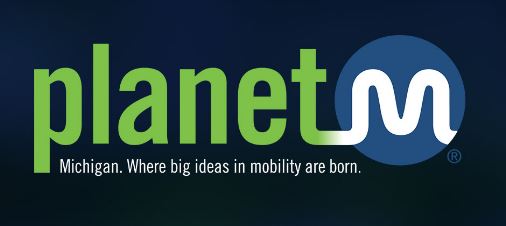Contact: Kathleen Achtenberg [email protected]
PlanetM, the State of Michigan’s mobility initiative, is awarding a round of its technology activation grant program to companies addressing the challenges presented by the spread of the novel Coronavirus.
Five companies – GHSP, Gatik, Penske Vehicle Services, RCO Engineering and Pratt Miller – received more than $280,000 in funding to aid in the development and deployment of solutions that address the mobility challenges COVID-19 presents in Michigan. This includes contactless automated delivery within the statewide retail supply chain, disinfecting technologies in West Michigan and barriers to protect transit workers in Detroit. The funding will also enable companies to reenact jobs impacted by the pandemic as well as create new jobs through production of these solutions and expansion into the state.
“The resiliency and innovation that these companies are displaying in the face of this global pandemic will make a significant difference as our industry comes together to fight this virus,” said Charlie Tyson, technology activation manager at PlanetM. “We look forward to demonstrating the power of Michigan’s public private partnerships in supporting the state’s need for safe mobility solutions during this unprecedented public health crisis.”
Meet the COVID-19 Mobility Solutions Grant Recipients:
GHSP ($80,000)
GHSP has developed a first-of-its-kind mobile UV-C treatment, grēnlite™. Using high-and-low dose UV-C light, the system is able to sense when there are occupants in a shared vehicle space and will disinfect the air and high-touch surfaces following their exit, reducing COVID-19 and other disease-causing germs for those on the front lines.
As part of the pilot program, the technology will first be integrated into May Mobility’s autonomous shuttle fleet as part of the Grand Rapids Autonomous Vehicle Initiative, made possible through a connection by startup accelerator, Seamless. The pilot program will serve as a launching pad for additional projects throughout the state and beyond, including plans to integrate into EMS applications and police vehicles statewide in partnership with Life EMS and SoundOff Signal.
The real-time data being gathered is continually analyzed and used to make adjustments in system operation and improve overall effectiveness. The program is setting the stage for this technology to become commonplace in all mobile spaces where germs and pathogens can affect our health and wellbeing.
“With the challenges our world is currently facing with the COVID-19 pandemic, we’re very pleased that we’re able to bring this technology to the market at this time,” said Tom Rizzi, CEO of GHSP. “Helping improve the safety of the emergency service and public safety providers that expose themselves every day to help others was a big driver in getting this product developed and this technology will also create new engineering and manufacturing jobs in our Michigan economy.”
Gatik ($100,000)
Gatik, a Palo Alto-based autonomous delivery company, is working with one of the state’s largest retailers to automate their on-road transportation network. The pilot involves deploying autonomous delivery vehicles on predetermined, fixed routes throughout Grand Rapids and Rochester, Mich. This partnership will help reduce human-to-human transmission channels of COVID-19 via contactless delivery, minimize personnel-based disruptions to the supply chain and transform the way groceries, health products and other everyday goods are sustainably delivered.
California-based Gatik also plans to create new jobs for Michiganders as well as obtain a facility in the state through this pilot grant.
“We founded Gatik with one mission: to move goods safely and efficiently using autonomous vehicles,” said Gautam Narang, co-founder and CEO of Gatik. “With COVID-19, this mission has never been more important. We’re delighted to expand our operations to a state with such a proud automotive heritage and help support the pandemic response here in Michigan.”
Penske Vehicle Services ($28,000)
A current mobility challenge facing the city of Detroit is transporting passengers while protecting transit workers against COVID-19. Working with the city and its transportation vendor, Penske Vehicle Services (PVS) has started production on temporary vehicle occupant safety partitions, which are portable, clear vinyl barriers designed to increase physical separation between front seat drivers and back seat occupants of passenger vehicles.
With this grant, Penske Vehicle Services is producing vehicle occupant safety partitions and has secured a small contract with a leading ride-sharing service. These barriers do not seal off the front and back seats entirely, but are designed to provide an additional comfort buffer between drivers and passengers for increased safety precautions.
“We are very pleased to receive the support of PlanetM and MEDC. This grant represents a win-win for the community and for our company,” said Jill Lajdziak, president and CEO of Penske Vehicle Services. “This is a safe, efficient and scalable solution to further promote the health and safety of both the driver and passengers. It will help protect vulnerable members of the community, who rely on car transportation to shuttle back and forth between COVID-19 testing sites and for other related needs.”
RCO Engineering ($28,000)
RCO Engineering will also develop and pilot partitions to help offer some additional level of comfort for the drivers tasked with transporting residents to and from their destinations. The partition will not be designed to permanently alter the vehicles in any way. The city of Detroit will provide vehicles to be outfitted with RCO’s partition solution.
“RCO is honored to receive this grant opportunity and use our ingenuity to partner with MEDC, PlanetM, the city of Detroit, and to help flatten the curve and manage the spread of COVID-19,” said Jeff Simek, general manager at RCO Engineering.
Pratt Miller ($50,000)
Next month, Pratt Miller Mobility’s Large area autonomous Disinfecting robotic vehicle (LaaD) will be roaming Gerald R. Ford International Airport in Grand Rapids, Mich., in an effort to combat the Covid-19 virus. LaaD, the first-of-its-kind in deployed in the U.S., is a connected, electric and autonomous disinfecting robot that will dispense FDA-approved disinfecting materials through a multi-head electrostatic sprayer array. The electrostatic technology sprays disinfectant into the air and adheres to surfaces for maximum virus protection, while the autonomous platform monitors and guarantees coverage through the use of sensors and data analysis.
“It is an absolute honor to join forces with the State of Michigan in the battle against COVID-19. Being able to quickly integrate our Flexible Robotic Platform (FRP) with state-of-the-art spraying equipment and 35 gallons of disinfecting solution, is exactly why our family of Robotic Platforms exist,” said Simon Dean, vice president of mobility and innovation at Pratt Miller. “Our ultimate goal is that our robot, LaaD, combined with the forward-thinking mindsets of the teams at PlanetM and the Gerald R. Ford International Airport, will rebuild Michiganders’ confidence in the transportation and travel industries.”
“We are pleased to serve as a test location for the use of LaaD with FDA-approved disinfection products,” said Tory Richardson, CEO of the Gerald R. Ford International Airport. “This new technology has the potential to enhance our already-robust sanitation efforts, enabling us to maintain the highest standards of cleanliness in high-traffic areas. This innovative technology from Pratt Miller has the potential to be another critical tool in our efforts to combat the coronavirus.”
“We have an opportunity, and a responsibility, to leverage our robust mobility ecosystem and manufacturing heritage to spur innovative solutions to the challenges presented by the spread of this virus,” said Kathryn Snorrason, strategic accounts director at PlanetM. “We’re proud to do our part and support Michigan communities during a time like this.”
About the PlanetM Mobility Grants
The PlanetM Mobility Grants, separated into two categories – testing and pilots – encourage mobility startups and corporations to deploy their technologies in Michigan, or prove out their technology at one of the state’s world-class testing facilities including Mcity at the University of Michigan (UM), American Center for Mobility (ACM), GM Mobility Research Center (GMMRC) at Kettering University (KU), Michigan Unmanned Aerial Systems Consortium (MUASC) and Keweenaw Research Center (KRC) at Michigan Technological University (MTU). PlanetM partners with NextEnergy to support project management services for each pilot program. The PlanetM Mobility Grant program has awarded more than $2 million in grant funding since its inception in 2018.
In light of the global pandemic, PlanetM transitioned the PlanetM pilot grant funds to the COVID-19 mobility solutions grant, which provides funding to mobility solutions that address the crucial challenges presented by the spread of COVID-19 within the state of Michigan. For more information regarding PlanetM’s Mobility Grant program, visit planetm.com/grants.
To learn more about MEDC’s COVID-19 response programs and the impact they are having on economic recovery efforts, visit michiganbusiness.org/covid19response. Other resources for businesses across Michigan struggling with economic losses as a result of the COVID-19 virus can be found online at michiganbusiness.org/covid19.
Information around this outbreak is changing rapidly. The latest information is available at Michigan.gov/Coronavirus and CDC.gov/Coronavirus.
About Michigan Economic Development Corporation/PlanetM
The Michigan Economic Development Corporation is the state’s marketing arm and lead advocate for business development, job awareness and community development with the focus on growing Michigan’s economy. For more information on the MEDC and our initiatives, visit www.MichiganBusiness.org. To learn more about Michigan’s leadership in the revolution in transportation, visit PlanetM.com. Michigan has a unique and vast ecosystem that is leading the way in transforming the way people and goods are transported across all modes of transportation. Join the conversation on: LinkedIn, Twitter and YouTube.




